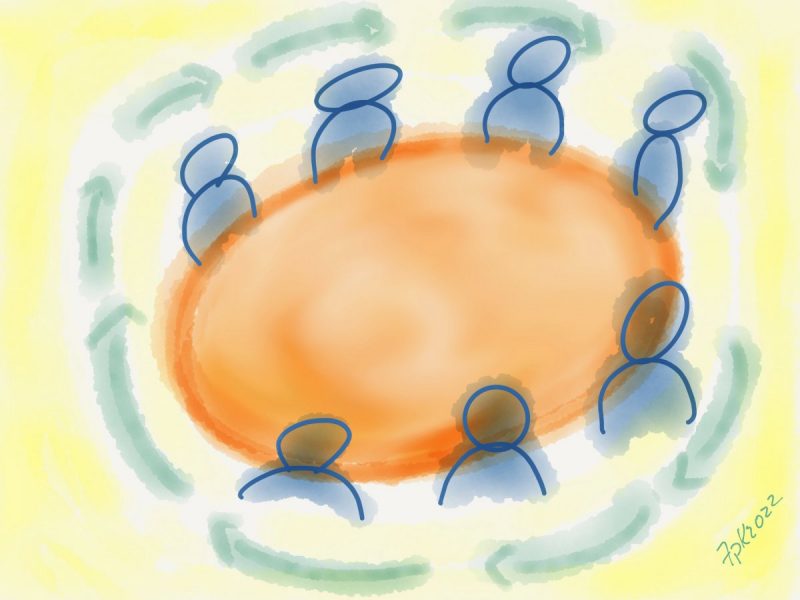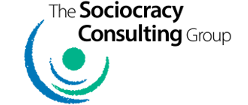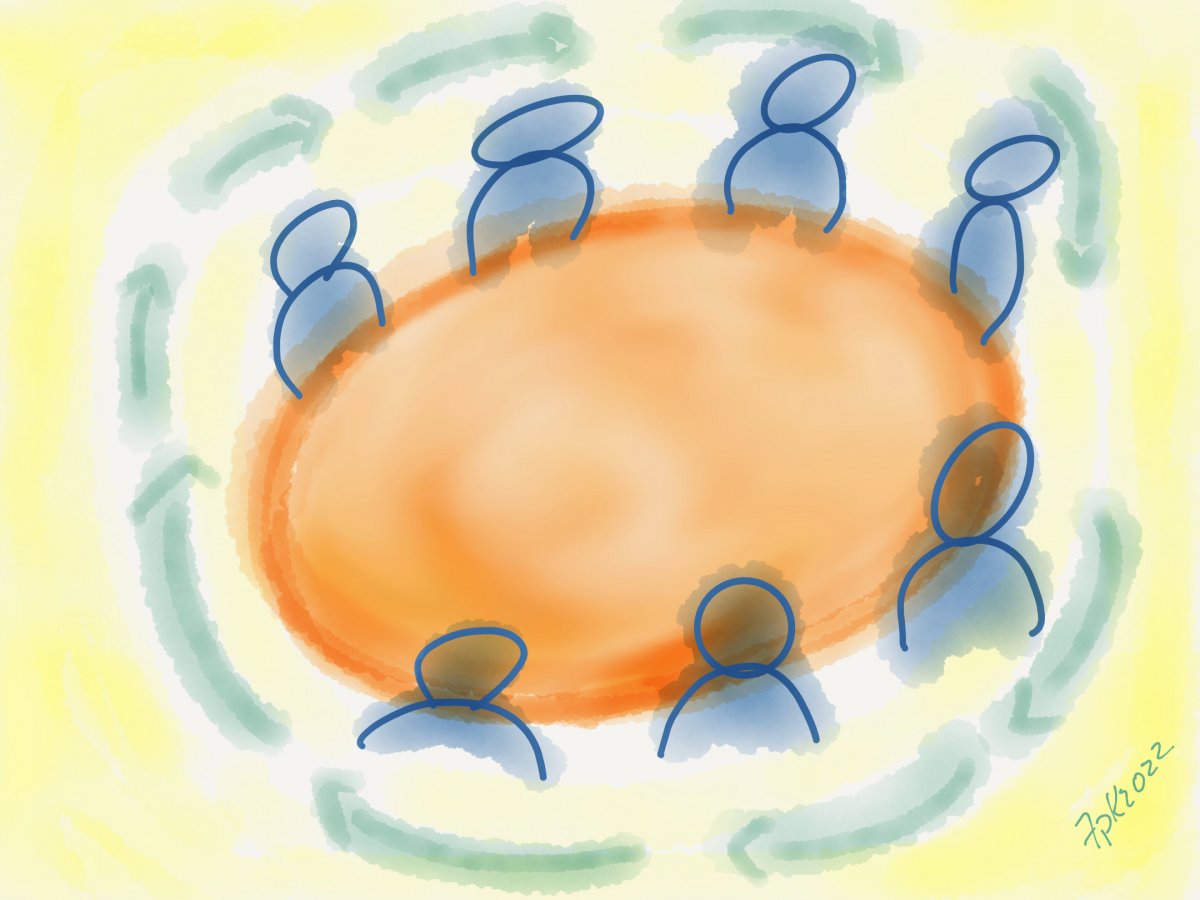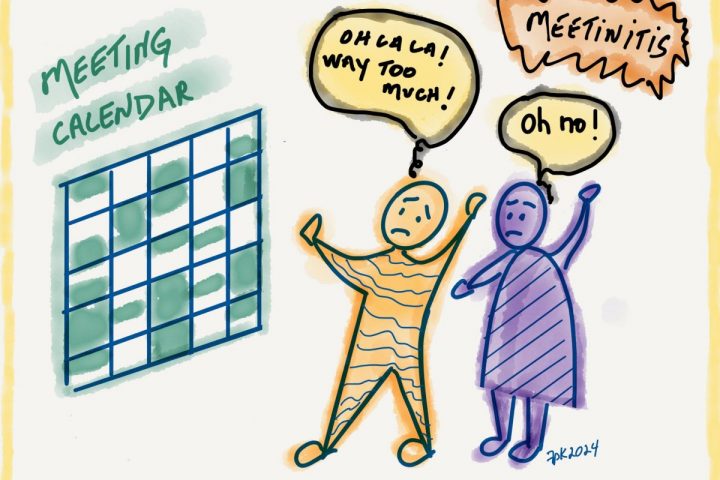“When someone deeply listens to you, your bare feet are on the earth and a beloved land that seemed distant is now at home within you.” –John Fox in Poetic Medicine: The Healing Art of Poem-making
If you prefer listening to reading, this blog is based on a podcast interview by the same name.
 In the previous blog I talked about what rounds are, and why and when to use them. Here I’ll discuss why they work, what gets in the way of using them, and some tips on how to use them.
In the previous blog I talked about what rounds are, and why and when to use them. Here I’ll discuss why they work, what gets in the way of using them, and some tips on how to use them.
Why do rounds work so well?
A round contributes greatly to establishing psychological safety. For example, if people are constantly interrupting me when I’m talking, I am on guard. That affects how my brain functions.
Our brains have two main functions: to connect us for growth and to keep us safe. I call these two neural networks the Connected Brain and the Safety Brain, respectively. When I’m on guard, I’m functioning at least in part from my Safety Brain. Yet my Connected Brain is the main source of new and creative ideas. Studies from neuroscience confirm that we think better when functioning from our Connected Brain. Here are two explanations for why we think better, given by Nancy Kline in More Time to Think: A Way of Being in the World (p. 57):
Being listened to is a form of appreciation. People think better when they are being appreciated than when they are being criticized. Neuro-imaging studies looked at how appreciative thoughts and feelings affect blood flow to the brain, compared to when we are thinking critical thoughts. Blood flow to the cerebellum, cingulated gyrus, and left basal ganglia decreases when we think critical thoughts, and increases when we think appreciative ones.
Based on research from The HeartMath Research Center, when the heart’s rhythm and pattern are at healthy levels, the cortex gets active. In the presence of appreciation, the rhythm and pattern of the heart move toward those healthy levels. So appreciation moves through the heart to stimulate the brain to work better.
Rounds provide an environment that helps people think. Groups of people have a “collective intelligence factor,” a so-called “c-factor,” analogous to “general intelligence” for individuals. According to a study in Science Magazine a decade ago, that c-factor is independent of either average or maximum individual intelligence of group members. The more equality there is in conversational turn-taking, the higher a group’s collective intelligence. Other studies, including those in Google’s Project Aristotle, have confirmed that finding. Rounds increase conversational equality and make a group smarter.
A round can include feelings and positive feedback. That means more psychological safety and that people are more likely to bring their whole selves to the meeting. That in turn results in more connection among people, clearer thinking, and willingness to consider others’ ideas.
If rounds are so effective, what gets in the way of doing them?
A round is different from what most people are used to. A common reaction is, “How could we make time for that?”
The paradox is that a round can save time. Creative ideas surface sooner. People listen more generously since they know they will also have a turn. Quiet people can hold as much sway in the meeting as the vocal ones. Everyone relaxes as they get more experience with the process and grow to trust it. New ideas, productivity, and connections energize the participants – even in a virtual meeting.
Here are a couple of specific reasons why rounds can save time:
If a discussion has turned into a debate, people sometimes restate what they’ve said to be sure they are heard. (I have certainly found myself doing this.) That takes time. And that tends to happen less when using rounds.
Without a round, one person may start out proposing an idea. Even if it’s a dead-end idea, the group could spend a bunch of time discussing or even debating it before discarding it. On the other hand, if the group starts with a round, they get a whole lot more ideas at the start, and can then pick the most promising ones to discuss further.
There’s another reason why some people resist doing rounds, and this one is more challenging. A round puts everyone on an even footing for the time of the rounds. Some people are threatened by that, whether executives in companies or parents in families. If you agree in principle that a round could be a good idea and wonder if you’re hesitating for this reason, it may feel like jumping off a diving board for the first time. Take a deep breath and jump.
Then pay attention to the results. You may want to discuss your experience with someone else at the meeting. If you have resistance to doing rounds, you might also have a blind spot for what you observe in a meeting with rounds. Looking at the results of rounds with someone else can correct for that blind spot.
Tips for doing rounds
If you are the facilitator, you can say, “Let’s do this as a round.” Anyone else in the meeting can also suggest it: “I’d love to hear everyone’s ideas about this. Could we have a round to hear from everybody?” It’s the same in a family: “Could we hear everyone’s ideas in a round, and do it without cross talk? We can discuss the ideas later. First, let’s hear from everybody without interrupting each other.”
It’s fine to pass when it’s your turn in the round. Say “Pass,” or “My ideas have been said,” or “Nothing to add.” It does the group a favor to pass rather than taking time to repeat ideas that have already been said.
If you are the facilitator, call on people in the round. For an in-person meeting, ask someone to start the round and then go around the circle or the table. It’s clear that way whose turn is next. Be sure to include yourself in the round, either first, last, or in the middle. You can even mix the order up from one round to another.
In an online meeting, the order is less clear. It’s easy for two people to start talking at once or to have a long pause until someone starts. You can avoid either of those by calling on people.
An alternative is to call on people two in advance: “Let’s hear from Jerome next, and then Francesca.” That gives Francesca time to anticipate turning on her microphone if it’s muted, so it can save a little time. The downside is that Francesca, who now knows she will be next, may start thinking about what she will say rather than listening to Jerome, and some spontaneity – which can be a source of creativity – is lost. You might want to experiment with this and see which method you prefer.
If you are facilitating a team meeting and time is limited, you can ask everyone to respond in, for example, three sentences. Or you can set a time limit per person, and then be prepared to tell them when that time is up. If it’s a large group, divide into smaller groups. Have them do a round in each group with someone designated as facilitator, and ask them to select a reporter to summarize the group’s ideas to the larger group. The reports can have a time limit as well.
Try these approaches to create productive and enjoyable meetings where everyone can speak candidly, new and creative ideas emerge, and people leave energized.
Thanks to John Schinnerer for editing assistance with this blog.
For more about rounds, see Three Tips for Meetings that Sizzle and ABC’s of (Virtual) Meetings that Rock.
To explore how to have more effective meetings, or to have us facilitate a meeting for you, see Your Meeting Coach or contact us for a free consultation.
 Sheella Mierson, Ph.D., a founding member of The Sociocracy Consulting Group, helps design relationships, processes, and structures for collaboration so that people and organizations flourish.
Sheella Mierson, Ph.D., a founding member of The Sociocracy Consulting Group, helps design relationships, processes, and structures for collaboration so that people and organizations flourish.




